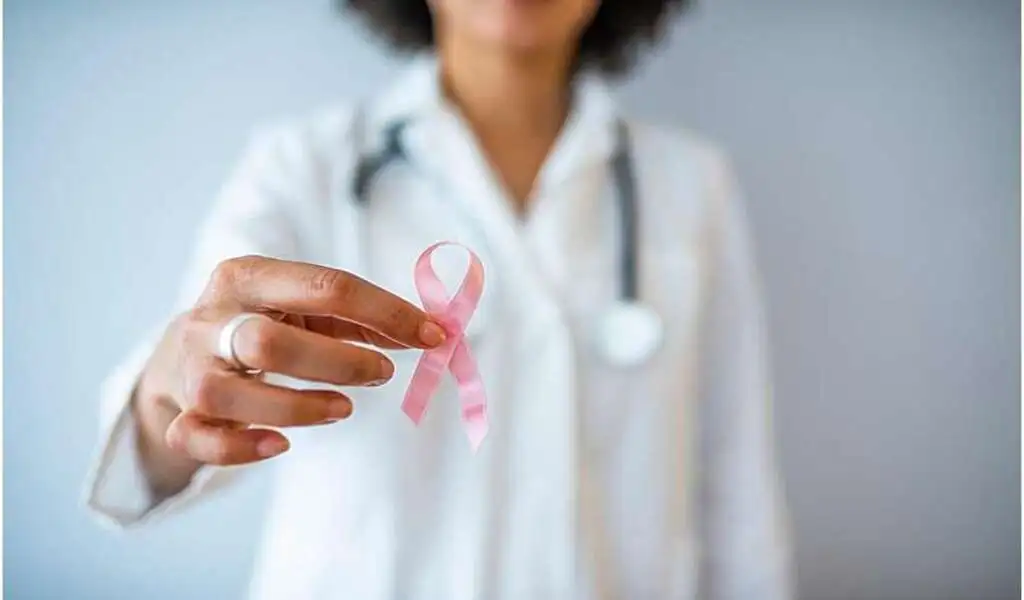Health
BLS Basics: The Essential Steps to Save a Life

Picture this: You are strolling in the park on a fine sunny day, breathing in fresh air and enjoying nature, when you trip over a man who has fallen down. Your heart races. It seems that everybody wants to help, but do they know what to do?
Knowing Basic Life Support (BLS) will help you be more prepared in the event of an emergency and assist you in saving someone’s life if called upon.
Step 1: Ensure Safety
Remember, to avoid becoming a victim yourself, always assess the situation’s safety before jumping in to help. Stemming threats—be out looking for any signs of traffic, electric wires, or anything else that may endanger your life or that of the victim.
The safety of everyone must be paramount because it is impossible to protect others if you yourself are targeted.
Step 2: Checking Responsiveness
After ensuring the scene is secure, one should go near the affected person and determine if he or she is responding to stimuli. Step down to their shoulders and shake them slightly while saying, “Are you alright?” If the opponent does not stir, it is time for the next level. In case they do respond, only wait for them to gain some consciousness and then follow their condition until the arrival of assistance.
Step 3: Call for Help
If you have something to show that this person is unresponsive, do not hesitate to call for assistance. Get someone on the phone to call the emergency services by using your own physical phone or shout at someone to call. Ensure that any information related to your current location and events around you or in your environment is well relayed.
In case you are in a public place, please, get someone to look for an Automated External Defibrillator (AED).
Step 4: Check for Breathing
Place your subject on their back and gently turn their head sideways to clear the airway and observe for appropriate breathing patterns. Attempt to take some breaths, no longer than 10 seconds in total, with your ‘look and feel’ sense engaged.
If the person is breathing normally, let him continue breathing in this manner, but if he is gasping or besides breathing at all, you should start doing CPR.
Step 5: Begin Chest Compressions
Position the heel of one hand in the middle of the chest of the person and on the lower part of the sternum. Then, grasp it with the other hand on top and squeeze the fingers to lock. Ensure that your elbows are locked and oppose the plane of the shoulders to the plane of your hands.
Press hard and fast and ensure that the depth of the chest compression is at least 2 inches deep and the rate of the compression is 100 to 120 per minute. Picture it: The iconic song ‘Stayin’ Alive’ by the Bee Gees – that should give you some idea of the pace you need to keep up consistently.
Step 6: Give Rescue Breaths (If Trained)
If you have BLS certification, you should administer breathing breaks. If you are trained to perform CPR, give two rescue breaths after each 30 chest compressions.
Put your hand over the person’s mouth and nose with one hand and the other stay free; make the chest rise by blowing into their mouth.
Each breath should take approximately a second. If you are not trained or feel uncomfortable giving rescue breaths, do chest compressions.
Step 7: Administer CPR If an AED is available, use it.
If an AED is available, switch on the AED and use it following the prompts provided. Place the two pads on the chest of the person; one on right and upper part of the chest and the other on the left and lower part of chest.
The AED will monitor the condition of the heart by listening to its beat and will tell you to press the shock button if necessary. Ensure that none of the subject’s body is in contact with another person while administering the shock.
Move on to basic first aid such as CPR until the arrival of advanced emergency health care services or the person regains normal breathing.
Step 8: Continue CPR
If you were trained, continue with 30 chest compressions and two rescue breaths until the person responds or help arrives. It can be quite straining, so if there is an available and capable person, switch to minimize tiredness.
Step 9: Monitor and Reassure
If the person begins to breathe by themselves, he or she should be put in the recovery position. This includes turning them on their side, with the top leg flexed at the hip joint to form a triangle for supporting the upper part of the body and the head tilted slightly backward to keep the air passage clear.
Remain with the patient and offer comfort until other forms of assistance come in.
Conclusion
Basic Life Support may sound complicated but know that when someone’s life hangs in the balance, little time is too long. These steps should help you to make a huge difference during an emergency situation.
Ensuring safety is important, as well as checking the person’s responsiveness, how to call for help, how to perform chest compressions, how to give rescue breaths, the usage of AED and monitoring the person are all significant activities to help save a life.
Just consider the level of satisfaction when one knows they have helped others and the feeling that comes with it. BLS is more than just knowledge it is the ability to respond when faced with an emergency situation. Thus, get the CPR course, rehearse and be prepared for that fateful moment.
SEE ALSO: UK Patients Testing World’s First Personalized mRNA Cancer Vaccine For Melanoma

Health
Report Causes Pfizer Stock to Climb Approximately $1 Billion Acquired by Starboard

(VOR News) – According to a rumor that activist investor Pfizer Starboard Value has taken a holding in the struggling pharmaceutical business that is expected to be worth around one billion dollars, the stock of Pfizer (PFE) is on the increase in premarket trading on Monday.
This comes after the report was made public. The report was made available to the general public following this. Starboard Value was successful in moving forward with the acquisition of the position.
Starboard is said to have approached Ian Read, a former chief executive officer of Pfizer, and Frank D’Amelio, a former chief financial officer, in order to seek assistance with its goals of boosting the performance of the company, according to the Wall Street Journal. Read and D’Amelio are both former Pfizer executives.
The purpose of this is to facilitate the accomplishment of its objectives, which include enhancing the overall performance of the firm.
In their previous jobs, D’Amelio and Read were chief financial officers.
It is stated in the report that the hedge fund is of the opinion that Pfizer, which is currently being managed by Albert Bourla, who succeeded Read as Chief Executive Officer (CEO) in 2019, does not demonstrate the same level of mergers and acquisitions (M&A) discipline that Read did. Bourla took over for Read in 2019. Read was succeeded by Bourla in the year 2019.
Pfizer, a multinational pharmaceutical conglomerate, has made substantial investments in the acquisition of more companies that are involved in the research and development of cancer medicines.
These businesses have been acquired for billions of dollars. The biotechnology company Seagen, which was acquired by Pfizer in the previous year for a price of $43 billion, is included in this category. One of the businesses that can be classified as belonging to this category is Seagen.
In spite of the fact that the S&P 500 Index experienced a 21% increase in 2024.
No major trading occurred in Pfizer stock that year.
Due to the fact that the demand for Pfizer’s COVID-19 vaccines fell after the firm reached its pandemic peak in 2021, the share price of the corporation has decreased by over fifty percent since that time.
This drop has occurred ever since the company’s shares reached their maximum peak, which was during the time that this decline occurred. Not only have they not changed at all, but they have also remained essentially stable. This is in contrast to the S&P 500, which has gained 21% since the beginning of this year.
Recently, the corporation was forced to take a hit when it decided to recall all of the sickle cell illness medications that it had distributed all over the world.
Fears that the prescription could lead patients to experience severe agony and possibly even death were the impetus for the decision to recall the product. In spite of the fact that Pfizer’s stock is increasing by almost three percent as a result of the news that followed the company’s decision, this is the circumstance that has come about.
SOURCE: IPN
SEE ALSO:
New Study Reveals Drinking Soda Pop Increases the Risk of Stroke
The Mpox Vaccine’s Protection Decreases Within a Year; Booster Requirements
Health
New Study Reveals Drinking Soda Pop Increases the Risk of Stroke

A recent report from global research indicates that excessive consumption of coffee or soda pop is associated with an increased risk of stroke, although the intake of black and green tea is correlated with a reduced risk. Excessive consumption of soda pop or coffee warrants caution!
Recent research indicates that it may substantially elevate the risk of stroke.
Consuming four cups of coffee daily elevates the risk of stroke, according to studies, although ingesting 3-4 cups of black or green tea daily typically offers protection against stroke. Additionally, consume more coffee; it may reduce your risk of mortality.
Recent findings from global research studies co-led by the University of Galway and McMaster University, alongside an international consortium of stroke researchers, indicate that soda, encompassing both sugar-sweetened and artificially sweetened variants such as diet or zero sugar, is associated with a 22 percent heightened risk of stroke. The risk escalated significantly with the consumption of two or more of these beverages daily.
Stroke Risk Fizzy Drinks and Soda Pop
The correlation between fizzy drinks consumption and stroke risk was most pronounced in Europe, the Middle East, Africa, and South America. Women exhibit the most elevated risk of stroke from bleeding (intracranial hemorrhage) associated with fruit juice beverages. Consuming over 7 cups of water daily diminishes the likelihood of stroke due to a clot.
Researchers observed that numerous items advertised as fruit juice are derived from concentrates and have added sugars and preservatives, potentially negating the advantages often associated with fresh fruit and instead elevating stroke risk.
Fruit juice beverages were associated with a 37 percent heightened risk of stroke resulting from bleeding (intracranial hemorrhage). Consuming two of these beverages daily increases the risk thrice.
Consuming over four cups of coffee daily elevates the risk of stroke by 37 percent, although lower consumption levels do not correlate with stroke risk. Conversely, tea consumption was associated with an 18-20 percent reduction in stroke risk. Additionally, consuming 3-4 cups daily of black tea, such as Breakfast and Earl Grey varieties, excluding green and herbal teas, was associated with a 29 percent reduced risk of stroke.
Consuming 3-4 cups of green tea daily was associated with a 27 percent reduction in stroke risk. Notably, the addition of milk may diminish or inhibit the advantageous effects of antioxidants present in tea. The lower risk of stroke associated with tea consumption was negated for individuals who added milk.
Disclaimer: This article is intended solely for informational reasons and should not be considered a replacement for professional medical counsel. Consistently consult your physician regarding any inquiries pertaining to a medical problem.
Related News:
Starbucks Faces Sales Decline Amid Price Fatigue and Rising Competition
Starbucks Faces Sales Decline Amid Price Fatigue and Rising Competition
Health
Following a Diagnosis of Breast Cancer, What Else Should You Know?

(VOR News) – Even though breast cancer affects one in eight American women, receiving a diagnosis can make a woman feel isolated.
Experts in breast cancer from the American College of Physicians (ACS) advise patients on how to manage their disease so that they may better cope with this awful information.
First, the kind and stage of breast cancer dictates the course of your care.
In addition to immunotherapy and chemotherapy, there are various surgical options available for the treatment of breast cancer.
Women of African descent are disproportionately affected by triple-negative breast cancer, an extremely aggressive form of the disease that has never proven easy to treat.
According to the American Cancer Society, pembrolizumab (Keytruda), an immunotherapy, has been shown to be helpful when combined with chemotherapy and is currently the recommended course of treatment for certain combinations of triple-negative breast cancer.
In her presentation, Dr. Katharine Yao said, “It’s really important that the patient and physician discuss the patient’s preferences and values when deciding what type of treatment to pursue and that they have an honest, individualized discussion with their care team.”
She is currently responsible for developing breast cancer treatment recommendations for more than 575 hospitals and institutions nationwide in her role as chair of the American College of Surgeons’ National Accreditation Program for Breast Institutions (NAPBC).
Yao, vice chair of research at Endeavor Health NorthShore Hospitals in New York, pointed out that each decision made about a patient’s treatment plan should take her preferences and diagnosis into consideration.
She ought to think about whether she would prefer a mastectomy—a surgical procedure that involves removing the entire breast with or without reconstruction—or a lumpectomy, which involves a surgical procedure that spares part of the breast tissue.
She stated that “the breast cancer you have may be very different from the breast cancer you hear about in your neighbor, colleague, or friend” in a press release issued by the American Cancer Society (ACS).
“Consider that while discussing breast cancer with others.”
Throughout your journey, it is critical that you look after your emotional health because having breast cancer may have a detrimental impact on your mental health.
“Getting a cancer diagnosis does not mean that everything in your life stops to be normal.” Director of the Fellowship in the Diseases of the Breast program at the Winthrop P. Rockefeller Cancer Institute at the University of Arkansas and state head of the American Cancer Society Commission on Cancer for Arkansas, Dr. Daniela Ochoa She thinks adding the burden of a cancer diagnosis and treatment to all the other pressures in life may be taxing.
“Managing stress and emotional health is vital component of a treatment plan.”
Ochoa recommends clinically trained psychologists and social workers who have assisted people in coping with cancer to anyone receiving treatment. Learning coping techniques might also be facilitated by joining cancer support groups or cancer wellness initiatives.
Breast cancer specialists say your care team is crucial.
The American Cancer Society (ACS) defines comprehensive care as having support at every stage of the procedure from surgeons, oncologists, patient navigators, nurses, social workers, psychologists, and other specialists.
After receiving a breast cancer diagnosis, women should see a surgeon or medical oncologist to explore their options; nevertheless, treatment shouldn’t be discontinued after just one appointment or after surgery is over.
Additionally, you can ask trustworthy friends or family members to accompany you to appointments and aid you with research or notes. They could serve as a network of support for you.
Yao stated in his talk that “one of the most important things is that patients should search out a team they have confidence in, that they trust will have their back when they need it, and a team they feel they can get access to and that will help them when they are in need.”
SOURCE: MP
SEE ALSO:
The Mpox Vaccine’s Protection Decreases Within a Year; Booster Requirements
COVID was a Paradigm Shift in Health Policymaking, Says Commissioner Stella Kyriakides.
Rwanda Reports 8 Deaths Linked To Ebola-Like Marburg Virus Days After It Declared An Outbreak
-

 News3 years ago
News3 years agoLet’s Know About Ultra High Net Worth Individual
-
Entertainment2 years ago
Mabelle Prior: The Voice of Hope, Resilience, and Diversity Inspiring Generations
-

 Health4 years ago
Health4 years agoHow Much Ivermectin Should You Take?
-

 Tech2 years ago
Tech2 years agoTop Forex Brokers of 2023: Reviews and Analysis for Successful Trading
-

 Lifestyles3 years ago
Lifestyles3 years agoAries Soulmate Signs
-

 Movies2 years ago
Movies2 years agoWhat Should I Do If Disney Plus Keeps Logging Me Out of TV?
-

 Health3 years ago
Health3 years agoCan I Buy Ivermectin Without A Prescription in the USA?
-

 Learning3 years ago
Learning3 years agoVirtual Numbers: What Are They For?